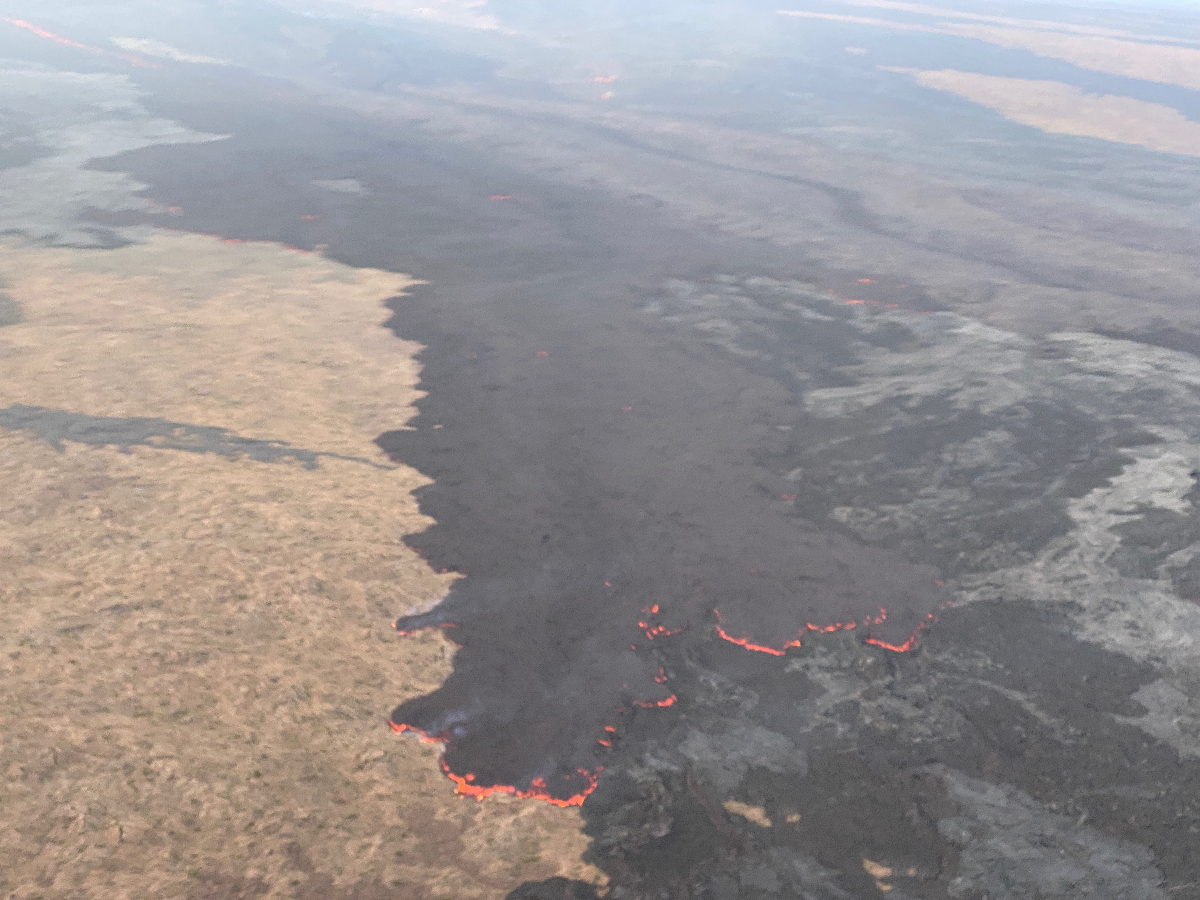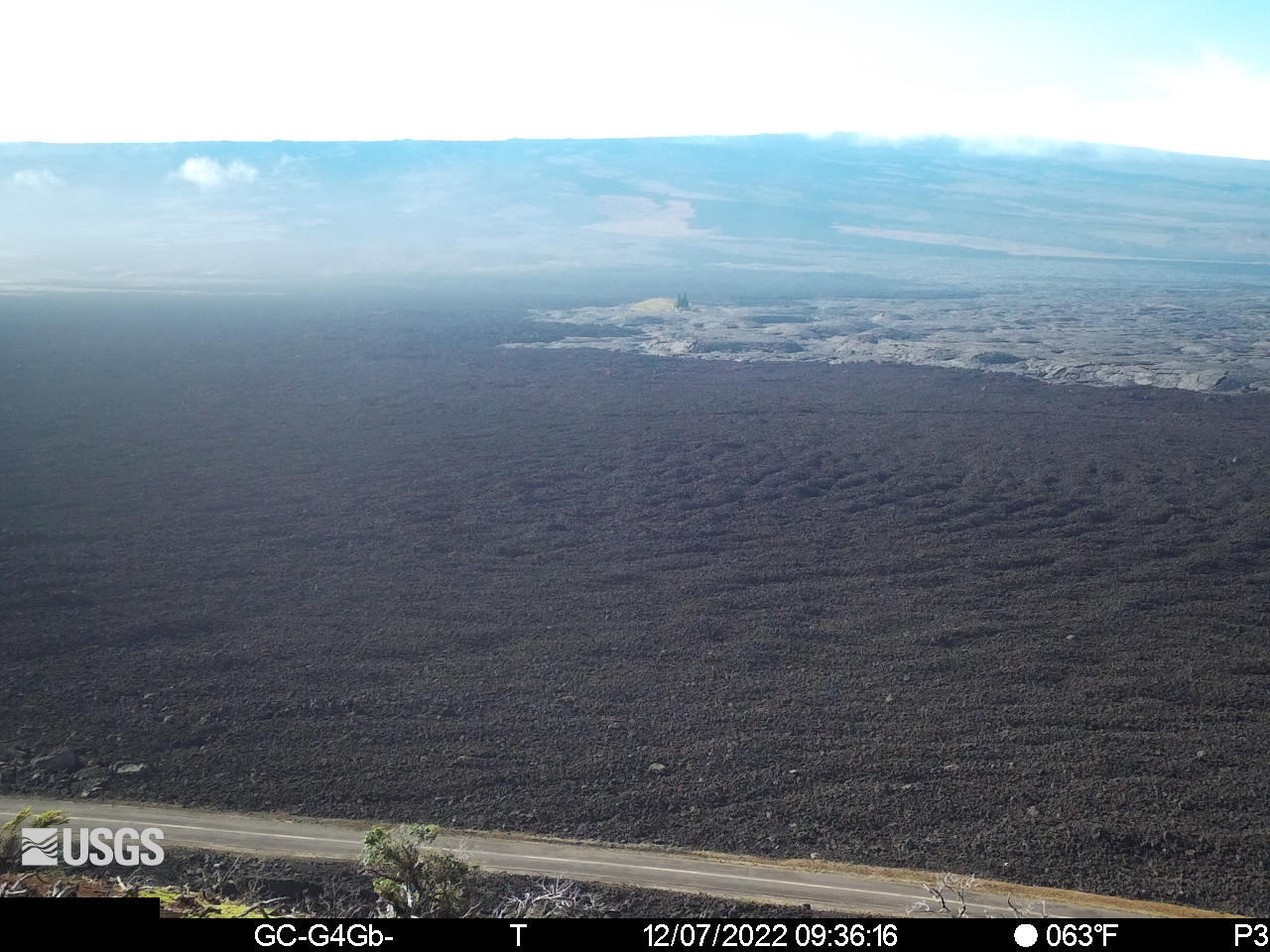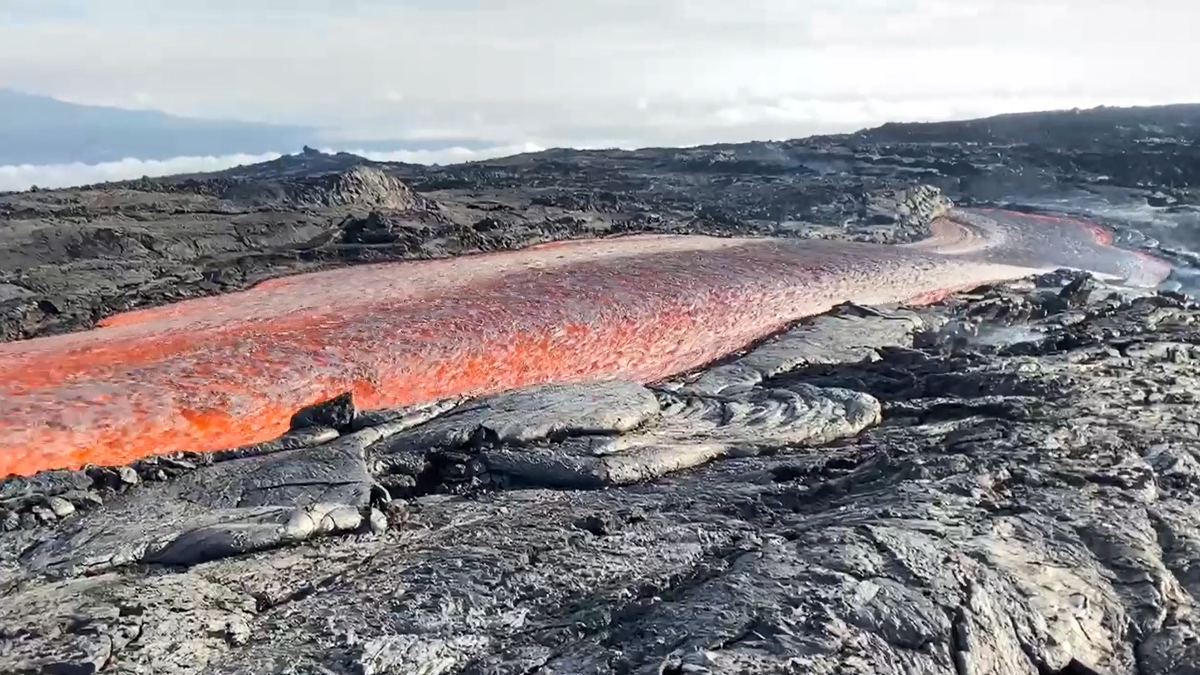
USGS: “The Northeast Rift Zone eruption of Mauna Loa continues the morning of December 7, 2022. This image, taken during a morning overflight, shows an overflow from the main channel several kilometers upslope from the lava flow front.” (USGS image by F. Trusdell)
UPDATE – (10 a.m. HST on Wednesday, December 7)
- As of 6 a.m. today, the flow front was about 1.8 mi (2.9 km) from the Daniel K. Inouye Highway (Saddle Road). A civil defense alert issued on Tuesday evening reporting the lava was 1.5 mi from the highway was erroneous, officials confirmed on Wednesday.
- A significant breakout from the channel has been observed about 2.8 mi (4.5 km) behind the tip of the main flow on the east side, and is likely removing lava from the channel and slowing the advance of the flow front.
- HVO crews have installed a new webcam to view the front of the main flow.
- Hawaii County Mayor Mitch Roth said that the Royal Order of Kamehameha has been in contact with officials regarding the cultural preparation of the area for the arrival of Pele, including the removal of rubbish in advance of the lava.
- Officials continue to ask the public to stay on the Old Saddle Road and refrain from hiking out to the lava flow over dangerous ground.
From the USGS Hawaiian Volcano Observatory at 8:59 a.m. HST:
The Northeast Rift Zone eruption of Mauna Loa continues. One active fissure, fissure 3, is feeding a lava flow advancing slowly northward toward the Daniel K. Inouye Highway (Saddle Road). The lava flow has reached relatively flat ground causing it to slow down significantly over the past several days, as expected.
As of 6:00 a.m. today, December 7, the flow front was about 1.8 mi (2.9 km) from the Daniel K. Inouye Highway (Saddle Road). The flow advanced only a small distance since midnight possibly due to a significant breakout removing lava from the channel about 2.8 mi (4.5 km) behind the tip of the main flow on the east side. During the past 24 hours, the main flow has advanced at an average rate slower than 20 feet (6 meters) per hour. The lava flow remains active and is continuously supplied from the fissure 3 vent. HVO crews have installed a new webcam to view the front of the main flow.

USGS: Image of fissure 3 erupting on the Northeast Rift Zone of Mauna Loa volcano from the new USGS webcam
Advance rates may be highly variable over the coming days and weeks. On the flat ground between Mauna Loa and Mauna Kea, lava flows advance more slowly, spread out, and inflate. Individual lobes may advance quickly, and then stall. Additional breakouts may occur if lava channels get blocked upslope. There are many variables at play and both the direction and timing of flow advances are expected to change over periods of hours to days, making it difficult to estimate when or if the flow will impact Daniel K. Inouye Highway.
Sulfur dioxide (SO2) emission rates of approximately 120,000 tonnes per day (t/d) were measured on December 4, 2022, and remain elevated at this time.


by Big Island Video News10:04 am
on at
STORY SUMMARY
HAWAIʻI ISLAND - A significant breakout from the lava channel has been observed about 2.8 mi (4.5 km) behind the tip of the main flow on the east side, officials say.